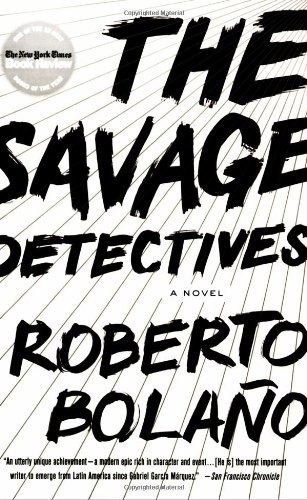nex3 reviewed The Savage Detectives by Roberto Bolaño
None
4 stars
Much like 2666, it's hard for me to tell how I feel about this in the moment, but I strongly suspect it'll haunt my memories for a long time to come. In fact, the inspiration for reading it in the first place was that 2666 kept bouncing around in there. While this doesn't have the same eerie quality, the depth that its 360-degree portrait of the main characters goes into is incredibly impressive. I have no idea how to summarize who Arturo Bolano or Ulises Lima are in words, but I feel that they now inhabit my heart.
Much like 2666, it's hard for me to tell how I feel about this in the moment, but I strongly suspect it'll haunt my memories for a long time to come. In fact, the inspiration for reading it in the first place was that 2666 kept bouncing around in there. While this doesn't have the same eerie quality, the depth that its 360-degree portrait of the main characters goes into is incredibly impressive. I have no idea how to summarize who Arturo Bolano or Ulises Lima are in words, but I feel that they now inhabit my heart.






